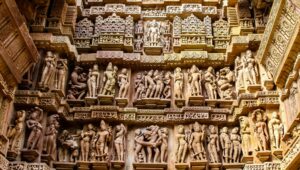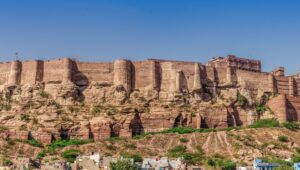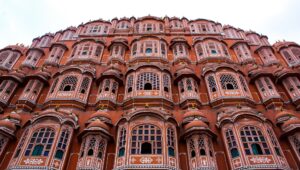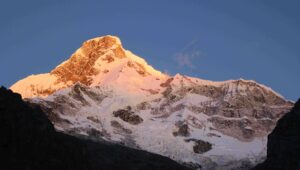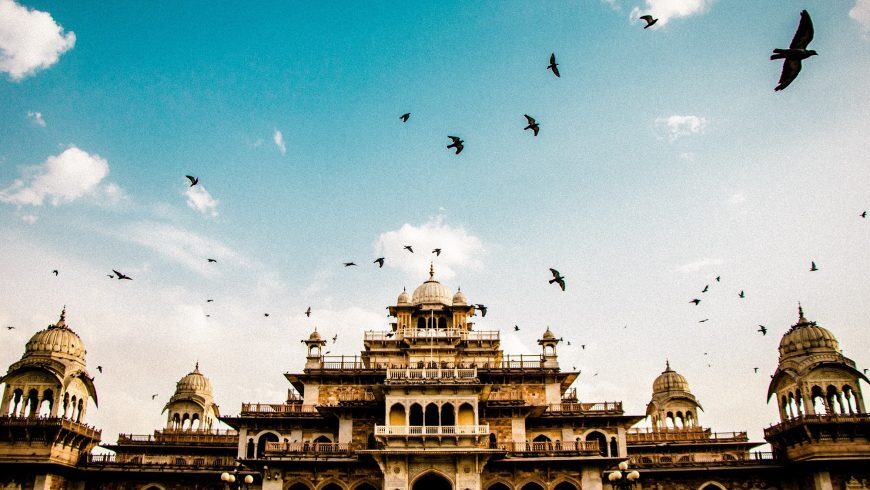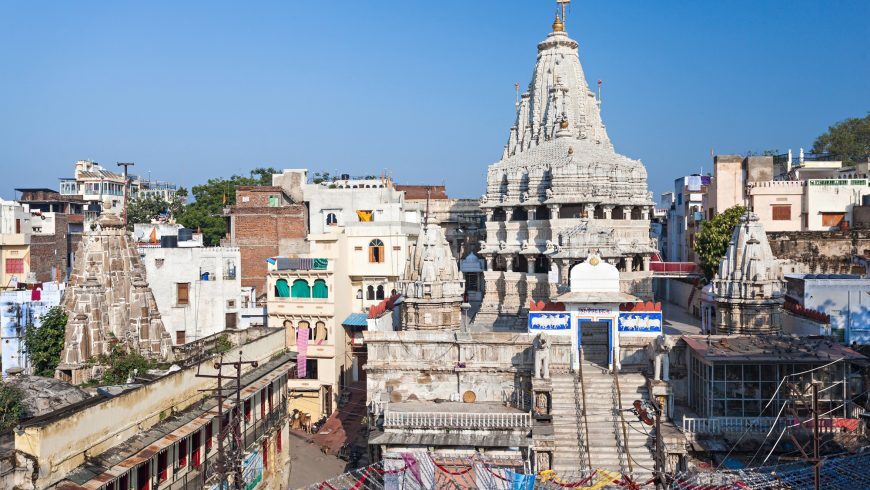Overview
Enjoy a 13-day tour and visit the historical cities of Delhi, Jaisalmer, Jodhpur, Ranakpur, Udaipur, Pushkar, Jaipur, and Agra. Visit the magnificent forts, palaces, and museums that narrate the success stories of bravery of the soil and the delicacy of the stonework. See the sand dunes, amazing lakes, rugged forts and palaces, men and women in colorful turbans and skirts, bustling towns, and quiet villages.
Itinerary
Day 1 :
Arrive in Delhi
Arrive in Delhi, and meet the representative.
Transfer to the hotel.
Overnight stay in Delhi Hotel.
Day 2 :
Delhi Sightseeing
Visit the Red Fort Shah Jahan constructed Red Fort in 1939, and it was the main residence of the Mughal Dynasty. It is located in the city center. It is made from red sandstone, and that is where it gets its name from. It became a UNESCO World Heritage Site in 2007.
See Qutub Minar, which is a five-story tapering tower with a height of 73 meters. The spiral staircase in this minaret has 379 staircases. It is a UNESCO World Heritage Site and visited by many every day.
Go to India Gate; it is a war memorial located near the Rajpath. It is dedicated to the soldiers of British India who died in the wars. The India Gate, even though a war memorial, evokes the architectural style.
Head to the Lotus Temple, famous for its flower-like shape; Lotus Temple is a house of worship and open to all. Winning numerous awards, this place is a prominent attraction for all.
Stop by Raj Ghat, a memorial dedicated to Mahatama Gandi; Raj Ghat is situated in Delhi. It is a black marble open to the sky and a flame that eternal burns at one end. It is a great place to learn more about the history of the country.
Continue to Jama Masjid, one of the largest mosques in the country; Jama Masjid is made up of red sandstone and marble. It was constructed by Shah Jahan and is visited by hundreds of people every day. The mosque's courtyard can accommodate about 25,000 people and be built for about one million Indian Rupees.
Enter Humayun's Tomb, which is the tomb of the Mughal Emperor Humayun in Delhi, India. The tomb was commissioned by Humayun's first wife and chief consort, Empress Bega Begum, in 1558 and designed by Mirak Mirza Ghiyas and his son, Sayyid Muhammad.
Stroll in the streets of Chandni Chowk or take a cycle rickshaw ride in Chandni chowk & Khari Baoli Spice Market, a busy shopping area with markets full of spices, dried fruit, silver jewellery, and vivid saris. In contrast, the narrow side streets are crowded with tiny shops selling essential oils, stationery, and traditional Indian sweets.
Overnight stay in Delhi Hotel.
Day 3 :
Delhi to Jaisalmer by flight or Train.
Breakfast at hotel, and transfer to the Airport to board flight for Jaisalmer.
Arrive at Jaisalmer Airport, and transfer to Desert Camp.
Visit Kuldhara Village, Kuldhara is an abandoned village in the Jaisalmer district. Established around the 13th century, it was once a prosperous village inhabited by Paliwal Brahmins.
Head to the Sam Sand Dunes, take an evening jeep safari and Camel Safari in the desert. Witness the unparalleled views of the sunset over the tall sand dunes located at a distance of 40 km from the Golden City of Jaisalmer.
Overnight stay in Desert Camp
Day 4 :
Jaisalmer Sightseeing
Visit Jaisalmer Fort, situated in the city of Jaisalmer. It is believed to be one of the very few "living forts" globally, as nearly one-fourth of the old city's population still resides within the fort. For the better part of its 800-year history, the fort was the city of Jaisalmer.
Head to Nathmalji ki Haveli, constructed by Maharawal Berisal in 1885 CE, to serve as the residence of Diwan Mohata Nathmal, the then Prime Minister of Jaisalmer. The chief architects of this haveli were two brothers, named Hathi and Lulu. There is a fascinating story regarding its construction. It is believed that both the brothers started building the facets of the haveli simultaneously. The two sides are similar but not identical.
Move to Patwa Havelis, a cluster of five havelis aligned in a narrow lane in the city's heart. Of the five Havelis, the first haveli in the lane, aka the Kothari’s Patwa Haveli, is not only extraordinarily preserved and restored but is also open to visitors to experience the lifestyle of the erstwhile patwas.
See Salim Singh Ki Haveli, an architecturally notable residence built-in 1815 with a peacock-shaped roof & numerous balconies.
Go to Bada Bagh, also called Barabagh, is a garden complex located about six kilometres north of Jaisalmer. Overlooking a mango grove sits a set of royal chhatri cenotaphs constructed by the Maharajas of the Jaisalmer State in the 18th, 19th, and early 20th centuries.
Stop by Gadi Sagar Lake, originally a human-made reservoir founded to provide a source of water to Jaisalmer. Founded in 1367 by the first ruler of the city Maharawal Jaisal, this reservoir was revamped by Maharawal Garsi Singh.
Visit market own self.
Overnight stay at Jaisalmer hotel.
Day 5 :
Jaisalmer to Jodhpur
Visit the Mehrangarh Fort, the 5 km long majestic fort on 125 m high hill is one of the most impressive & formidable structures. Although invincible from the outside, the fort has four gates approached by a winding road. Within the fort are some magnificent palaces with marvellously carved panels, latticed windows and evocative names.
Head to Moti Mahal, Phool Mahal, Sheesh Mahal, Sileh Khana & Daulat Khana. These Palaces house a fabulous collection of trappings of Indian royalty, including a superb collection of palanquins, elephant howdahs, miniature paintings of various schools, musical instruments, costumes.
See Jaswant Thada, the imposing white marble memorial that marks the site of the royal crematorium. It houses portraits of successive rulers. The four cenotaphs around here commemorate notable acts of bravery and generosity of the four successive rulers.
Overnight stay at Jodhpur hotel.
Day 6 :
Jodhpur Sightseeing
Take an excursion jeep safari to Guda, a Bishnoi village, home to a vivid range of exotic wildlife and nature. It is a habitat for thousands of migratory birds in the area. One can often catch the Demoiselle crane frolicking at the lake. Antelopes and blackbucks can also be spotted by the pond. It is the perfect place to experience the traditions and customs of tribal life. It is a place caught in a delightful time warp, where life still goes on like the days of the past.
Enjoy lunch with the Villagers.
Visit Ghanta Ghar or the Clock Tower, a prominent landmark in Jodhpur. It was built by Maharaja Sardar Singh between 1880 and 1911.
In the evening, have time for leisure or marketing.
Overnight Stay at Jodhpur hotel.
Day 7 :
Jodhpur To Udaipur Via Ranakpur Temple
Have breakfast at the hotel and drive to Udaipur; en-route, visit Ranakpur Jain Temple.
Enter the Ranakpur Temple, a complex comprised of 1444 intricately carved pillars, 24 pillared halls accompanied by 80 domes borne by 400 columns.
Stop by Lake Pichola, and in the evening, check-in at Udaipur Hotel.
Enjoy a boat cruise on Lake Pichola, see the ghats along the lake and the interesting buildings on the banks. The view of the city palace from the lake is spectacular.
Day 8 :
Udaipur Sightseeing
Head to the City Palace, a palace complex situated in the city of Udaipur. It was built over a period of nearly 400 years, with contributions from several rulers of the Mewar dynasty.
Visit Saheliyon Ki Bari, which was laid for a group of forty-eight maidens. This garden is located on the banks of the Fateh Sagar Lake, presenting a green retreat in the drylands of Rajasthan. It was built from 1710 to 1734 by Maharana Sangram Singh for the royal ladies.
Continue to Bagore Ki Haveli and in the evening watch "Dharohar" folk dance show at Bagore-ki-Haveli. A gorgeous 18th-century haveli that has been converted into a museum showcasing Mewar art and architecture. The haveli puts on one of the best Rajasthani folk dance shows in Rajasthan. For an hour, performers dance to Rajasthani folk music wearing bright coloured ethnic dresses. The dances are varied and demonstrate the tradition and culture of Rajasthani folklore.
Over-night stay at Udaipur hotel.
Day 9 :
Udaipur-Chittorgarh-Pushkar
Head to Chittorgarh Fort, the largest fort in India. It is a UNESCO World Heritage Site. The fort was the capital of Mewar and is located Udaipur-Pushkar Road.
Visit Pushkar, one of Rajasthan’s most popular towns. This lakefront holy town is among the most picturesque in an already photo-worthy state, with a peaceful lake surrounded by 52 ghats and beautiful hills and temples in the distance.
Overnight stay at Pushkar hotel.
Day 10 :
Jaipur Sightseeing
Go for Pushkar sightseeing which is best known for two things: Brahma Temple, one of the few temples on earth dedicated to the Hindu god of creation, and its annual Camel Fair.
And go-head to Jaipur.
Visit Amber Fort, situated on the top of the hill. Amber Fort is located in Amer. It was built by Raja Man Singh I. It is known for its artistic elements. The Maota Lake located in front of the monument acts as a source of water for the fort.
Over-night stay at Jaipur hotel.
Day 11 :
Jaipur Sightseeing
Visit the City Palace, and spend one hour exploring Maharaja’s City Palace. The City Palace of Jaipur was originally the administrative and ceremonial seat of Maharaja of Jaipur, constructed in 1721. It was also the location of religious and cultural events that took place at that time. It now houses the Maharaja Sawai Man Singh II Museum and continues to be the home of the Jaipur royal family.
Go to Hawa Mahal, also known as The Palace of Winds; it is made with red and pink sandstone, distinguishing from the surroundings. The palace is a five-storey pyramidal shaped monument and was built by Sawai Pratap Singh in 1799.
After the visit to Hawa Mahal, return to the hotel.
Continue to Jantar Mantar, a UNESCO World Heritage site built in 1734. It is a collection of nineteen architectural astronomical instruments built by the Rajput king Sawai Jai Singh II, the founder of Jaipur. The instruments allow the observation of astronomical positions with the naked eye.
Stop by Jal Mahal, a palace floating on Man Sagar Lake, for a photo opportunity. Jal Mahal is a palace located in the middle of Man Sagar Lake in the city of Jaipur. The palace and the lake around it were renovated and enlarged in the 18th century by Maharaja Jai Singh II of Amber. The palace and scenic beauty of the lake attract various tourists.
Stroll in the Johari Bazaar, a shopper's paradise and a must-visit destination, Johari Bazaar in Jaipur has a reputation that precedes itself. Located near Hawa Mahal, this market of exquisite jewellery and artifacts to choose from can immerse shoppers in its glittering glory. It is considered to be one of the oldest markets in Jaipur City.
Over-night stay at Jaipur hotel.
Day 12 :
Jaipur-Chand Baori-Fatehpur Sikri-Agra
Visit Chand Baori, built during the 8th and 9th centuries and has 3,500 narrow steps arranged in perfect symmetry, which descend 20m to the bottom of the well.
Head to Fatehpur Sikri, a small city in northern India, just west of Agra, founded by a 16th-century Mughal emperor. Red sandstone buildings cluster at their center. Buland Darwaza gate is the entrance to Jama Masjid mosque. Nearby is the marble Tomb of Salim Chishti. Diwan-E-Khas hall has a carved central pillar. Jodha Bais Palace is a mix of Hindu and Mughal styles.
Stop by the Taj Mahal, an ivory-white marble mausoleum on the southern bank of the river Yamuna in the Indian city of Agra. It was commissioned in 1632 by the Mughal emperor Shah Jahan to house the tomb of his favourite wife, Mumtaz Mahal; It also houses the tomb of Shah Jahan himself.
Return to Agra City.
Overnight stay at Agra hotel.
Day 13 :
Agra to Delhi
Visit Agra Fort, a historical fort in the city of Agra in India. It was the main residence of the emperors of the Mughal Dynasty until 1638 when the capital was shifted from Agra to Delhi.
Finally, the guests will be dropped at Delhi at their desire place.
Include
- Breakfast
- Private Air Condition Transport
- Camel Safari
- Jeep Safari
- Desert Stay with Gala Dinner (1 Night)
- Sight Seeing
- Hotel Accommodation
- .Toll Tax, Parking, Fuel etc.
Excludes
- Any Type of Monument entry charge
- Any Type of Drinks
- Lunch/Dinner
- Any Type of personal expenses
































